Infrastructure is necessary to make the world go round in our day and age. Both developed and emerging markets make use of energy and transportation to connect their people. Furthermore, the US recently passed the Infrastructure and Investment Jobs Act, putting $1.2 trillion adding to spending on infrastructure over the next several years. As a result, infrastructure companies may benefit from more spending on public roads, bridges, tunnels, railroads, etc. This article examines the best infrastructure ETFs to buy right now.

The 6 Best Infrastructure ETFs to Buy Now
Affiliate
StockRover is one of the best stock, ETF, and mutual fund screeners and analysis tools. It has 8,500+ stocks, 4,000 ETFs, and 40,000 mutual funds. You can get access up to 650+ metrics and financial data. The Stock Rover platform includes watchlists, portfolio integration, portfolio rebalancing, e-mail and text alerts, future income forecasts, etc.
What are Infrastructure ETFs?
Infrastructure ETFs (exchange-traded funds) offer a way to invest in companies that handle the physical and organizational side of facilities countries need for operation. Such areas include power supplies, roads, buildings, and all the assets required to make them work.
An ETF provides a targeted approach to these types of companies. Within a single fund, you’ll find a mix of infrastructure stocks from all over the country or the world that deal with these services. Instead of investing in dozens of different stocks, purchasing shares of an ETF allows you to build a diverse portfolio of stocks from the infrastructure industry all at once. Consequently, some investors like ETFs over stocks. In addition, ETFs have an advantage compared to index funds because they usually have a lower expense ratio.
The Best Infrastructure ETFs
We summarize six infrastructure ETFs as potential investments for a diverse and broad lazy portfolio of ETFs. The data is from Stock Rover*.

Alerian Energy Infrastructure ETF (NYSEARCA: ENFR)
The Alerian Energy Infrastructure ETF shadows the Alerian Midstream Energy Select Index, and the fund’s performance has historically stayed within close proximity. Its 31 holdings mirror the assets in the index.
Nearly 75% of Alerian’s infrastructure stocks are domestic, with the remaining balance coming from our neighbor to the north, Canada. The companies involved focus mainly on petroleum and natural gas pipeline transportation at 34.7% of total assets, with a considerable chuck in the gathering and processing industry at 31.11% of total assets.
Top holdings consist of Enbridge Inc (TO: ENB CN) at 9.64% of net assets, Enterprise Products Partners LP (NYSE: EPD) at 8.38% of net assets, and Energy Transfer LP (NYSE: ET) at 6.87% of total assets. Total assets account for over $133 million.
Share prices on the stock market have seen a net gain of around 19.8% on the year so far, even though the fund is passively managed. It also sports a 5.07% dividend yield to give back to shareholders. This ETF’s expense ratio is 0.35% for those looking to invest.
Related Article on Dividend Power
iShares Global Infrastructure ETF (NASDAQ: IGF)
The iShares Global Infrastructure ETF uses the S&P Global Infrastructure Index as its underlying index and unsurprisingly focuses on the global infrastructure industry. The fund has 74 unique holdings accounting for over $3.5 billion in net assets.
Key stocks belonging to the iShares Global Infrastructure ETF are NextEra Energy (NYSE: NEE) at 5.46% of total assets, Atlantia (OTC: ATASY) at 5.01 of assets%, and Transurban Group Stapled Units (AX: TCL) at 4.83% of total assets. Exposure comes mostly from utilities, but the fund’s holdings also cover transportation and energy stocks.
For an international ETF, 40% of total assets come from the United States. Canada, Australia, Italy, and Spain are all among the major contributors of companies to the ETF, but each represents less than 10% of the total holdings.
To consider iShares Global as an infrastructure investment, the fund demands 0.40% as a management fee for doing business. The ETF is sitting even on the year so far, but investing at the right time could spell significant rewards. Anyone buying in now can take advantage of an annual 2.44% dividend yield.
iShares US Infrastructure ETF (BATS: IFRA)
Like its bigger brother, this iShares ETF features a complete list of stocks from the infrastructure space. In addition, it is linked to the NYSE FactSet US Infrastructure Index, an index composed solely of stocks from American infrastructure companies. The assets within the fund amount to over $1.7 billion in total.
iShares US Infrastructure ETF has an impressive 156 holdings from various sectors. Most of these companies deal with Utilities, Industrials, and Materials, with minimal infrastructure exposure in the Energy sector. With a reach into transportation and materials, the ETF provides a diversified approach to any portfolio.
With so many companies in the fund, no one asset has significantly more weight than the others. Even so, top holdings consist of Infrastructure & Energy Alternatives Inc (NASDAQ: IEA), Constellation Energy Corp (NASDAQ: CEG), and Sunpower Corp (NASDAQ: SPWR), all around the 1% mark of total assets.
These low weights typically help keep stock market volatility to a minimum, but this year’s turmoil is a clear exception. Anyone looking ahead long-term can see the fund has succeeded since its inception in 2018. Investors seeking to claim a stake in this iShares ETF should see gains after the current market settles down. At 0.30%, it is also one of the cheaper ETFs to invest in. Lastly, the dividend yield is about 1.92%.
SPDR S&P Global Infrastructure ETF (NYSEARCA: GII)
The SPDR S&P Global Infrastructure ETF first appeared in 2007 with the S&P Global Infrastructure Index as its benchmark. The fund closely mirrors the index, experiencing almost identical gains over the last ten years.
Approximately 41% of the fund’s market value stems from utilities, followed closely by companies in the Utilities sector. All other holdings contribute to energy and electricity services throughout the world.
Seventy-four current assets account for a 15% earnings per share growth over the last five years, even though the fund has only recently climbed back to its pre-Covid share price. SPDR’s S&P Global Infrastructure ETF generally sees slow but upward momentum despite whatever’s happening in the Industrials sector.
NextEra Energy (NYSE: NEE) leads the charge, with 5.48% of the fund’s total weight. Atlantia (OTC: ATASY) and Enbridge Inc. (TO: ENB CN) follow suit at 4.98% and 4.78%, respectively.
Geographical distribution places 40% of companies in the United States, with only 9% going to Canada and Australia. Italy and Spain each come in at just 6.5% of the total.
Even with 74 holdings, the fund has only $565 million in assets under management (AUM) alongside a meaty $39.3 billion average market cap. The current dividend yield is ~2.87% while investors wait for the market’s volatility to simmer down. The expense ratio is a modest 0.40%.
FlexShares STOXX Global Broad Infrastructure Index Fund (NYSEARCA: NFRA)
The FlexShares STOXX Global Broad Infrastructure Index Fund works off the index of the same name. It has an almost identical split of energy, communication, and transportation stocks that represent several global economies.
Of those global markets, the fund invests 40% into companies in the United States, with Canada in a distant second at 18%. Japan rounds out the top three with 8.80% of the ETF’s total weight.
Even though Canada plays a minor overall role than the United States, the FlexShares STOXX Global Broad Infrastructure Index Fund lists the Canadian National Railway (NYSE: CNI) and Canadian Pacific Railway (NYSE: CP) as its top holdings. However, they account for only 4.42% and 3.74% of the total AUM of the fund. Verizon Communications (NYSE: VZ) maintains the third spot at 2.92%.
These companies are about 10%+ of the 239 holdings FlexShares has in its portfolio. Combined, all the companies contribute nearly $2.54 billion in total assets to the ETF.
Although the fund has seen a 5.7% average annual market price increase since its inception eight years ago, current volatility has it at a loss so far for 2022. Nevertheless, a 3.47% dividend yield should help anyone investing now to ride out the lull until things pick back up. Management fees are slightly on the high side at 0.48%.
Related Articles on Dividend Power:
- AT&T (T) vs. Verizon (VZ) Stock: Telecom Stock Matchup
- Is Verizon (VZ) a Good Dividend Stock
- 5 Income Stocks for Retirees
Global X U.S. Infrastructure Development ETF (BATS: PAVE)
The Global X U.S. Infrastructure Development ETF holds 99 assets that contribute an incredible $3.91 billion, making it the largest single dedicated infrastructure ETF available.
Like some others, the infrastructure development ETF trades a bit lower than it did at the beginning of the year. That said, the Global X ETF is still up nearly 9% per year on average from its debut in 2017.
This particular Global X ETF features only domestic US companies. Most holdings deal with the Industrials sector, and almost all others fall into the Materials sector. Together these two sectors comprise 91.9% of the fund. At the top are Sempra Energy (NYSE: SRE) at 3.98% of AUM, Nucor Corp (NYSE: NUE) at 3.88% of total assets, and Deere & Co (NYSE: DE) at 3.12% of assets.
The ETF doesn’t offer a substantial yield at this time, only a 0.80% dividend yield compared to some alternatives. Still, the fund captures many corporations that keep our country going and likely won’t be down for long. In addition, the expense ratio is a reasonable 0.47%.
Related Articles on Dividend Power:
- Nucor (NUE): Is the Rally in Steel Prices Over?
Affiliate
- Stock Rover* is a leading investment research and portfolio management platform.
- Stock Rover tracks more than 8,500 stocks, 4,000 ETFs, and 40,000 mutual funds in the US and Canada.
Large range of metrics and information about individual stocks. There are also screeners, investment news, research reports, charting capability, analyst rankings, watch lists, portfolios, etc.
- Stock Rover* is growing rapidly and now has over $11 billion in linked accounts.
- Best Buy and Hold Screener by Investopedia. Best of the Web by American Association of Individual Investors (AAII) in 2020.
- 14-day free trial for Stock Rover*.
Should You Invest in Infrastructure ETFs?
Investors wanting to focus on a specific industry need only turn to ETFs for a range of opportunities contained within a single stock. Doing so allows convenient diversity in a portfolio while allowing investment in an area of particular interest.
When it comes to infrastructure, every country in the developed and developing world makes use of several forms of transportation, energy, communication, and more to keep its people connected. As a result, infrastructure assets typically see steady long-term gains, and some protection from inflation as the demand for new services never goes away.
Final Words the 6 Best Infrastructure ETFs to Buy Now
Infrastructure companies keep our country and the world connected and maintain a prominent place in government spending. ETFs contain the best of these organizations, making investing in the space a breeze for those who see its benefits. Even as the market remains uncertain, infrastructure ETFs weather the turmoil well and often pay dividends even when share prices are down.
Thanks for reading the 6 Best Infrastructure ETFs to Buy Now.
You can also read the 7 Best Bank ETFs to Buy Now by the same author.
Disclosure: None
Author Bio: Noah Zelvis is an American copywriter for The Stock Dork who is on a mission to help clarify the nuances of the financial world. With a background in tech design, Noah is no stranger to numbers and financial data. He now uses these powers for good by writing reviews for The Stock Dork. When he’s not working, you’ll likely find Noah out running or traveling.




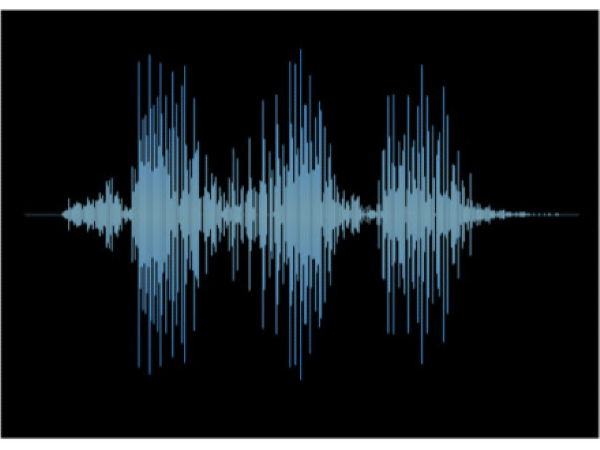
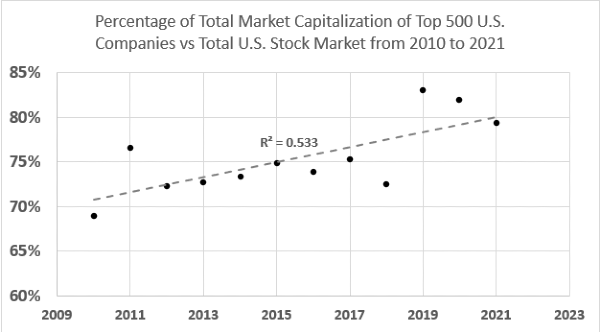


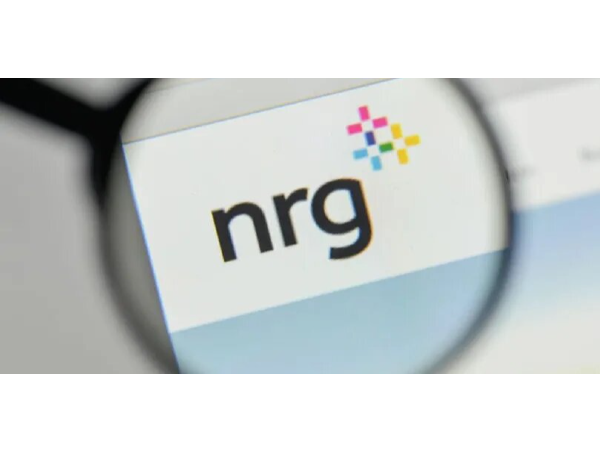





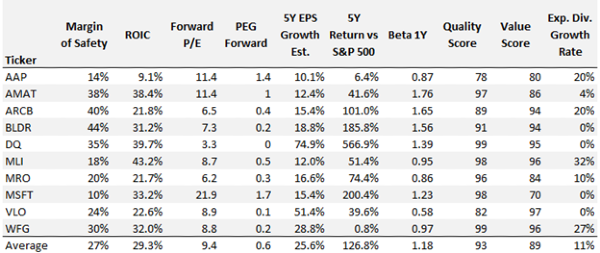

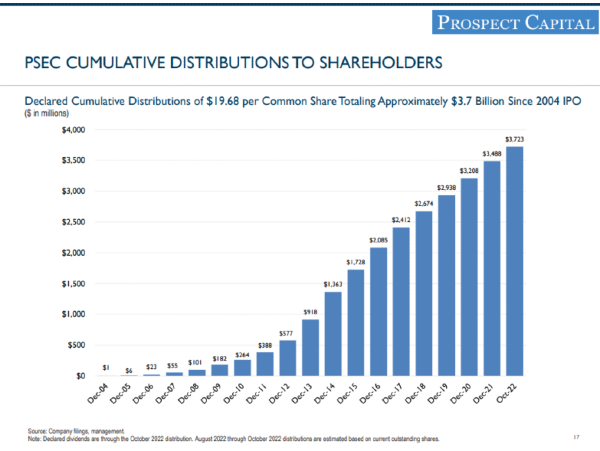



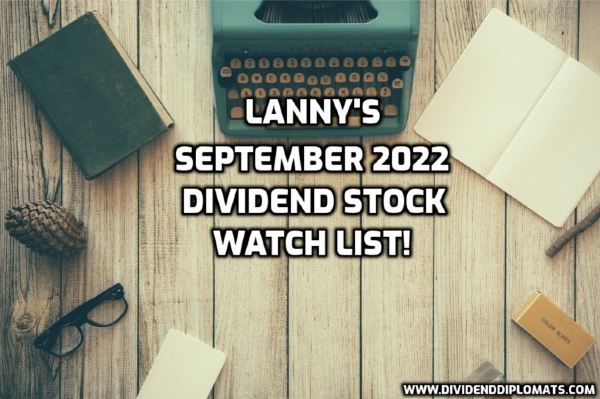
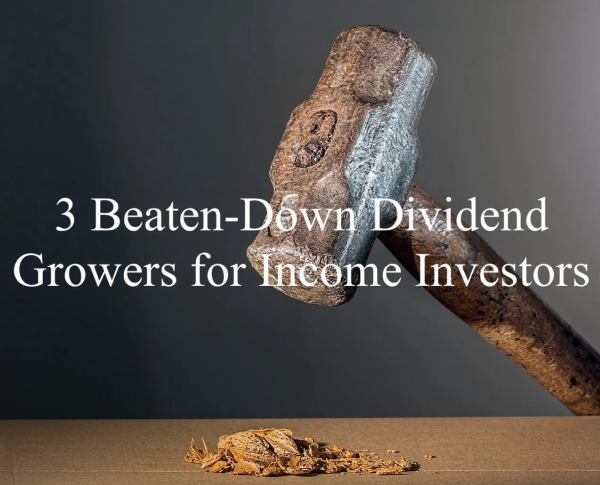









Infrastructure is necessary to make the world go round in our day and age. Both developed and emerging markets make use of energy and transportation to connect their people. Furthermore, the US recently passed the Infrastructure and Investment Jobs Act, putting $1.2 trillion adding to spending on infrastructure over the next several years. As a result, infrastructure companies may benefit from more spending on public roads, bridges, tunnels, railroads, etc. This article examines the best infrastructure ETFs to buy right now.
The 6 Best Infrastructure ETFs to Buy Now
Affiliate
StockRover is one of the best stock, ETF, and mutual fund screeners and analysis tools. It has 8,500+ stocks, 4,000 ETFs, and 40,000 mutual funds. You can get access up to 650+ metrics and financial data. The Stock Rover platform includes watchlists, portfolio integration, portfolio rebalancing, e-mail and text alerts, future income forecasts, etc.
What are Infrastructure ETFs?
Infrastructure ETFs (exchange-traded funds) offer a way to invest in companies that handle the physical and organizational side of facilities countries need for operation. Such areas include power supplies, roads, buildings, and all the assets required to make them work.
An ETF provides a targeted approach to these types of companies. Within a single fund, you’ll find a mix of infrastructure stocks from all over the country or the world that deal with these services. Instead of investing in dozens of different stocks, purchasing shares of an ETF allows you to build a diverse portfolio of stocks from the infrastructure industry all at once. Consequently, some investors like ETFs over stocks. In addition, ETFs have an advantage compared to index funds because they usually have a lower expense ratio.
The Best Infrastructure ETFs
We summarize six infrastructure ETFs as potential investments for a diverse and broad lazy portfolio of ETFs. The data is from Stock Rover*.
Source: Stock Rover*
Alerian Energy Infrastructure ETF (NYSEARCA: ENFR) The Alerian Energy Infrastructure ETF shadows the Alerian Midstream Energy Select Index, and the fund’s performance has historically stayed within close proximity. Its 31 holdings mirror the assets in the index.
Nearly 75% of Alerian’s infrastructure stocks are domestic, with the remaining balance coming from our neighbor to the north, Canada. The companies involved focus mainly on petroleum and natural gas pipeline transportation at 34.7% of total assets, with a considerable chuck in the gathering and processing industry at 31.11% of total assets.
Top holdings consist of Enbridge Inc (TO: ENB CN) at 9.64% of net assets, Enterprise Products Partners LP (NYSE: EPD) at 8.38% of net assets, and Energy Transfer LP (NYSE: ET) at 6.87% of total assets. Total assets account for over $133 million.
Share prices on the stock market have seen a net gain of around 19.8% on the year so far, even though the fund is passively managed. It also sports a 5.07% dividend yield to give back to shareholders. This ETF’s expense ratio is 0.35% for those looking to invest.
Related Article on Dividend Power
iShares Global Infrastructure ETF (NASDAQ: IGF)
The iShares Global Infrastructure ETF uses the S&P Global Infrastructure Index as its underlying index and unsurprisingly focuses on the global infrastructure industry. The fund has 74 unique holdings accounting for over $3.5 billion in net assets.
Key stocks belonging to the iShares Global Infrastructure ETF are NextEra Energy (NYSE: NEE) at 5.46% of total assets, Atlantia (OTC: ATASY) at 5.01 of assets%, and Transurban Group Stapled Units (AX: TCL) at 4.83% of total assets. Exposure comes mostly from utilities, but the fund’s holdings also cover transportation and energy stocks.
For an international ETF, 40% of total assets come from the United States. Canada, Australia, Italy, and Spain are all among the major contributors of companies to the ETF, but each represents less than 10% of the total holdings.
To consider iShares Global as an infrastructure investment, the fund demands 0.40% as a management fee for doing business. The ETF is sitting even on the year so far, but investing at the right time could spell significant rewards. Anyone buying in now can take advantage of an annual 2.44% dividend yield.
iShares US Infrastructure ETF (BATS: IFRA)
Like its bigger brother, this iShares ETF features a complete list of stocks from the infrastructure space. In addition, it is linked to the NYSE FactSet US Infrastructure Index, an index composed solely of stocks from American infrastructure companies. The assets within the fund amount to over $1.7 billion in total.
iShares US Infrastructure ETF has an impressive 156 holdings from various sectors. Most of these companies deal with Utilities, Industrials, and Materials, with minimal infrastructure exposure in the Energy sector. With a reach into transportation and materials, the ETF provides a diversified approach to any portfolio.
With so many companies in the fund, no one asset has significantly more weight than the others. Even so, top holdings consist of Infrastructure & Energy Alternatives Inc (NASDAQ: IEA), Constellation Energy Corp (NASDAQ: CEG), and Sunpower Corp (NASDAQ: SPWR), all around the 1% mark of total assets.
These low weights typically help keep stock market volatility to a minimum, but this year’s turmoil is a clear exception. Anyone looking ahead long-term can see the fund has succeeded since its inception in 2018. Investors seeking to claim a stake in this iShares ETF should see gains after the current market settles down. At 0.30%, it is also one of the cheaper ETFs to invest in. Lastly, the dividend yield is about 1.92%.
SPDR S&P Global Infrastructure ETF (NYSEARCA: GII)
The SPDR S&P Global Infrastructure ETF first appeared in 2007 with the S&P Global Infrastructure Index as its benchmark. The fund closely mirrors the index, experiencing almost identical gains over the last ten years.
Approximately 41% of the fund’s market value stems from utilities, followed closely by companies in the Utilities sector. All other holdings contribute to energy and electricity services throughout the world.
Seventy-four current assets account for a 15% earnings per share growth over the last five years, even though the fund has only recently climbed back to its pre-Covid share price. SPDR’s S&P Global Infrastructure ETF generally sees slow but upward momentum despite whatever’s happening in the Industrials sector.
NextEra Energy (NYSE: NEE) leads the charge, with 5.48% of the fund’s total weight. Atlantia (OTC: ATASY) and Enbridge Inc. (TO: ENB CN) follow suit at 4.98% and 4.78%, respectively.
Geographical distribution places 40% of companies in the United States, with only 9% going to Canada and Australia. Italy and Spain each come in at just 6.5% of the total.
Even with 74 holdings, the fund has only $565 million in assets under management (AUM) alongside a meaty $39.3 billion average market cap. The current dividend yield is ~2.87% while investors wait for the market’s volatility to simmer down. The expense ratio is a modest 0.40%.
FlexShares STOXX Global Broad Infrastructure Index Fund (NYSEARCA: NFRA)
The FlexShares STOXX Global Broad Infrastructure Index Fund works off the index of the same name. It has an almost identical split of energy, communication, and transportation stocks that represent several global economies.
Of those global markets, the fund invests 40% into companies in the United States, with Canada in a distant second at 18%. Japan rounds out the top three with 8.80% of the ETF’s total weight.
Even though Canada plays a minor overall role than the United States, the FlexShares STOXX Global Broad Infrastructure Index Fund lists the Canadian National Railway (NYSE: CNI) and Canadian Pacific Railway (NYSE: CP) as its top holdings. However, they account for only 4.42% and 3.74% of the total AUM of the fund. Verizon Communications (NYSE: VZ) maintains the third spot at 2.92%.
These companies are about 10%+ of the 239 holdings FlexShares has in its portfolio. Combined, all the companies contribute nearly $2.54 billion in total assets to the ETF.
Although the fund has seen a 5.7% average annual market price increase since its inception eight years ago, current volatility has it at a loss so far for 2022. Nevertheless, a 3.47% dividend yield should help anyone investing now to ride out the lull until things pick back up. Management fees are slightly on the high side at 0.48%.
Related Articles on Dividend Power:
Global X U.S. Infrastructure Development ETF (BATS: PAVE)
The Global X U.S. Infrastructure Development ETF holds 99 assets that contribute an incredible $3.91 billion, making it the largest single dedicated infrastructure ETF available.
Like some others, the infrastructure development ETF trades a bit lower than it did at the beginning of the year. That said, the Global X ETF is still up nearly 9% per year on average from its debut in 2017.
This particular Global X ETF features only domestic US companies. Most holdings deal with the Industrials sector, and almost all others fall into the Materials sector. Together these two sectors comprise 91.9% of the fund. At the top are Sempra Energy (NYSE: SRE) at 3.98% of AUM, Nucor Corp (NYSE: NUE) at 3.88% of total assets, and Deere & Co (NYSE: DE) at 3.12% of assets.
The ETF doesn’t offer a substantial yield at this time, only a 0.80% dividend yield compared to some alternatives. Still, the fund captures many corporations that keep our country going and likely won’t be down for long. In addition, the expense ratio is a reasonable 0.47%.
Related Articles on Dividend Power:
Affiliate
Should You Invest in Infrastructure ETFs?
Investors wanting to focus on a specific industry need only turn to ETFs for a range of opportunities contained within a single stock. Doing so allows convenient diversity in a portfolio while allowing investment in an area of particular interest.
When it comes to infrastructure, every country in the developed and developing world makes use of several forms of transportation, energy, communication, and more to keep its people connected. As a result, infrastructure assets typically see steady long-term gains, and some protection from inflation as the demand for new services never goes away.
Final Words the 6 Best Infrastructure ETFs to Buy Now
Infrastructure companies keep our country and the world connected and maintain a prominent place in government spending. ETFs contain the best of these organizations, making investing in the space a breeze for those who see its benefits. Even as the market remains uncertain, infrastructure ETFs weather the turmoil well and often pay dividends even when share prices are down.
Thanks for reading the 6 Best Infrastructure ETFs to Buy Now.
You can also read the 7 Best Bank ETFs to Buy Now by the same author.
Disclosure: None
Author Bio: Noah Zelvis is an American copywriter for The Stock Dork who is on a mission to help clarify the nuances of the financial world. With a background in tech design, Noah is no stranger to numbers and financial data. He now uses these powers for good by writing reviews for The Stock Dork. When he’s not working, you’ll likely find Noah out running or traveling.
Originally Posted on dividendpower.org